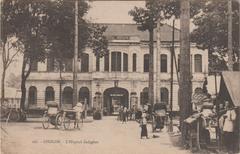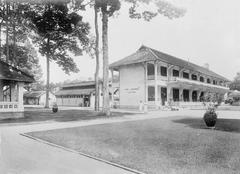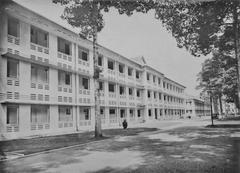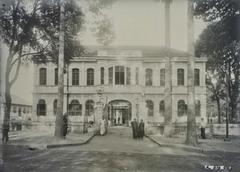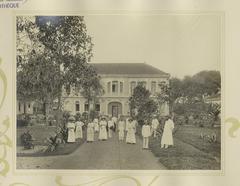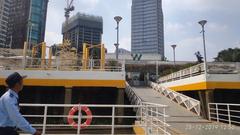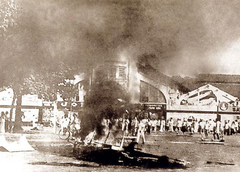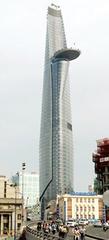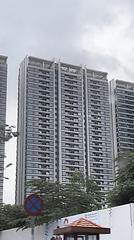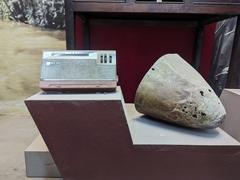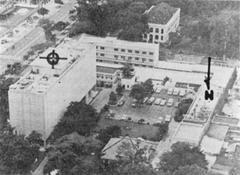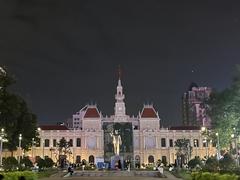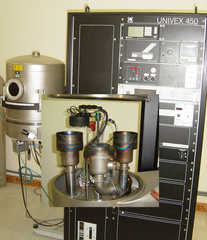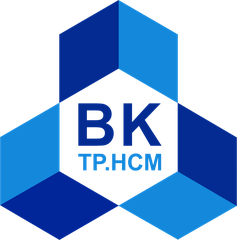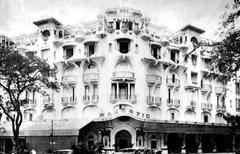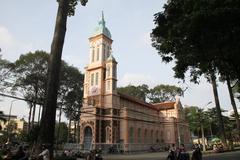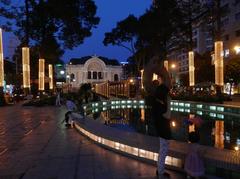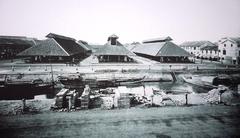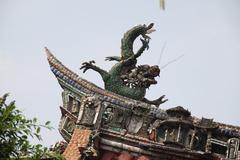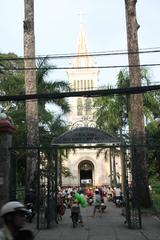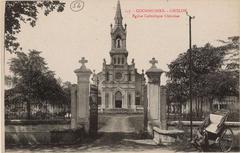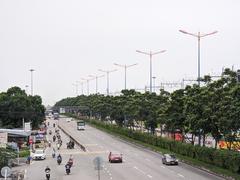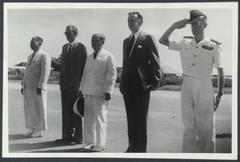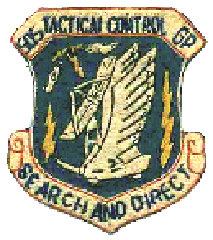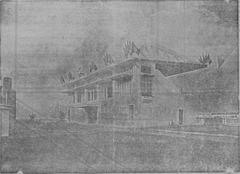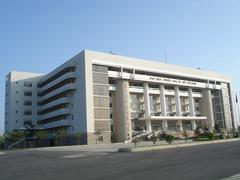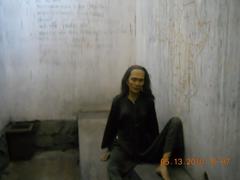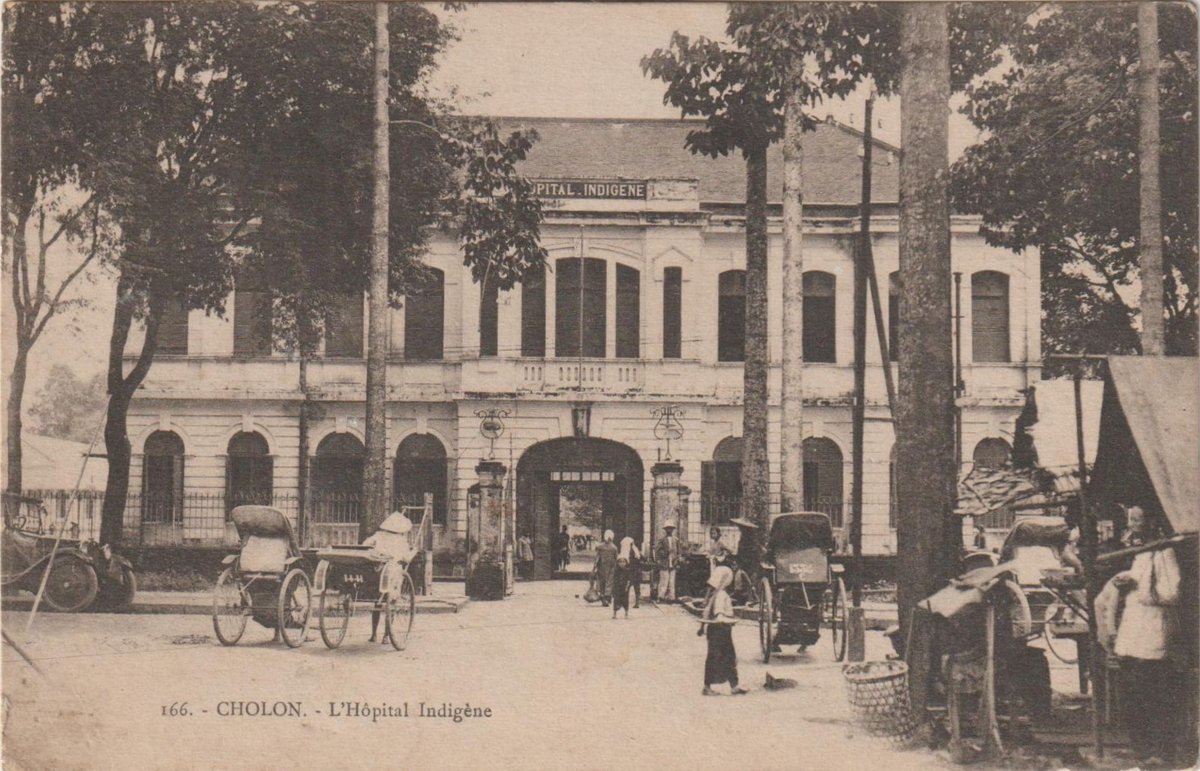
Cho Ray Hospital Visiting Hours, Visitor Guide, and Ho Chi Minh City Historical Context
Date: 15/06/2025
Introduction
Cho Ray Hospital, located in the heart of Ho Chi Minh City, is Vietnam’s largest and most historically significant medical institution. Established in 1900 during the French colonial period as Hôpital Municipal de Cholon, Cho Ray Hospital has evolved from a colonial facility for the local Vietnamese and Chinese communities into a modern, internationally recognized center of healthcare, education, and research. Its history mirrors the broader social and political changes in Vietnam, showcasing the nation’s journey towards advanced, equitable healthcare (Green Cities Fund; Way to Vietnam).
Today, Cho Ray Hospital is classified as a “Special Class” hospital under the Ministry of Health, offering over 2,000 beds and treating nearly 500,000 outpatients and 67,000 inpatients annually. The hospital serves as a critical referral center for southern Vietnam, a leader in advanced procedures like organ transplantation, and a key teaching institution affiliated with the University of Medicine and Pharmacy at Ho Chi Minh City (VietnamNet; VietnamPlus).
This comprehensive guide presents Cho Ray Hospital’s historical development, visitor information—including hours, access, and practical tips—and highlights nearby cultural attractions, enabling you to make the most of your visit to this landmark institution.
Table of Contents
- Introduction
- Historical Evolution
- Social Impact and Medical Achievements
- Visitor Information
- Cultural and Social Insights
- Nearby Attractions
- Frequently Asked Questions (FAQ)
- Conclusion
- References
Historical Evolution
Colonial Foundations (1900–1945)
Founded in 1900 as Hôpital Municipal de Cholon, Cho Ray Hospital was designed to serve the indigenous population of Cholon (now District 5), then a separate city with a large Chinese-Vietnamese community. The hospital’s French colonial architecture reflected both functional and aesthetic considerations, and its early mission prioritized free care for local residents—a rarity at the time (Green Cities Fund).
The hospital’s role expanded quickly; by 1909, it had admitted thousands of inpatients and provided free vaccinations. Its attached nursing school, open to indigenous students without tuition, helped lay the foundation for modern Vietnamese medical education.
During the colonial period, the hospital underwent several renamings, reflecting administrative and political changes: Hôpital Indigène de Cochinchine (1919), Hôpital Lalung Bonnaire (1938), Hôpital 415 (1945), and finally a division into Ham Nghi and Nam Viet clinics before their re-merger (Green Cities Fund).
Post-Colonial Transformation (1957–1975)
In 1957, the two clinics merged to form the current Cho Ray Hospital. The name “Cho Ray” references a local dyke and market, signifying the institution’s deep roots in the community. Cho Ray became a major teaching hospital, affiliated with Saigon Medical University, providing training in a wide range of specialties including surgery, internal medicine, and engineering (Green Cities Fund).
Its central location on Nguyen Chi Thanh Street made it a hub for both healthcare and medical education in southern Vietnam.
Modernization and International Collaboration (1975–Present)
After Vietnam’s reunification, Cho Ray Hospital became a “special ranking” general hospital, serving as the final referral center for 37 southern provinces and cities. Its services and capacity expanded dramatically, supported by Japanese government aid in the 1990s and the construction of the Cho Ray Vietnam–Japan Friendship Hospital (JICA Evaluation Report). The hospital has become a leader in advanced procedures, performing over 1,100 kidney transplants and pioneering robot-assisted surgeries (VietnamPlus).
International collaborations, such as with Taiwan’s Kaohsiung Chang Gung Memorial Hospital, have further strengthened its oncology and specialty care (Vietnam Investment Review). Cho Ray is also at the forefront of medical research, education, and public health initiatives.
Social Impact and Medical Achievements
Throughout its history, Cho Ray Hospital has been committed to equitable healthcare. It continues to provide free or subsidized care for the underprivileged through government-supported insurance and public health campaigns. The hospital is a major training center for medical students and professionals from Vietnam and neighboring countries, and its faculty are recognized for expertise and dedication (UVM Global Health Diaries).
The hospital’s achievements in organ transplantation, oncology, neurosurgery, and trauma care have garnered international recognition and contributed to Vietnam’s national medical progress (World Neurosurgery; VietnamPlus).
Visitor Information
Visiting Hours
- General visiting hours: 7:00 AM – 8:00 PM daily.
- Some departments (e.g., intensive care) may have specific restrictions. Visitors should check with the hospital or department in advance.
Accessibility and Transportation
- Address: 201B Nguyen Chi Thanh, Ward 12, District 5, Ho Chi Minh City (choray.vn).
- Transport: Easily accessible by taxi, motorbike, Grab, or public bus. Parking is available but limited; public transport is recommended during peak times.
- Wheelchair access: Available in most buildings; assistance upon request at the information desk.
Registration and Appointments
- Walk-in registration is available but often involves long waits.
- Online appointment system: Strongly recommended (hospital website).
- Required documents: Passport (foreigners), insurance card, any prior medical records.
- Emergency Department: Open 24/7; no appointment needed.
Hospital Layout and Facilities
- The campus is large, with multiple buildings for outpatient, inpatient, and specialty centers. Bilingual signage (Vietnamese/English) is present, but it’s advisable to ask at the information desk for directions.
- Pharmacy, food outlets, ATM, and waiting areas are available; premium health checkups include meals (Vietnam Teaching Jobs).
Language Support and Communication
- English-speaking staff are available, especially in the International Patient Department (Where2GoVietnam).
- Translation services or Vietnamese-speaking companions are recommended for complex needs.
Payment and Insurance
- Accepted: Cash (VND), credit cards; some direct billing with international insurers.
- Cost transparency: Standard prices posted; request estimates for major treatments.
Safety and Security
- The hospital is busy; secure your belongings, especially in crowded areas (Vietnam Teaching Jobs).
- Security and CCTV are present.
Amenities and Services
- Food: Multiple canteens and food stalls; bring your own water and snacks if needed.
- Restrooms: Generally clean; bring tissue and hand sanitizer.
- Accommodation: District 5 offers hotels and guesthouses nearby—book ahead during peak periods.
Cultural and Social Insights
Cho Ray Hospital is a microcosm of Vietnamese society, serving patients of all backgrounds. Family members play a key role in patient care, often staying with loved ones during hospitalization. Respect for privacy, modest dress, and observance of local customs—including religious practices at small altars in waiting areas—are important for all visitors.
International collaboration and exchange are welcomed, with the hospital serving as a training site for Vietnamese and overseas medical professionals (UVM Global Health Diaries).
Nearby Attractions
While Cho Ray Hospital itself is not a tourist destination, its central location allows visitors to explore:
- Cholon (Chinatown): Markets, pagodas, and temples.
- Binh Tay Market: A bustling traditional marketplace.
- Ben Thanh Market: Iconic city market for food and souvenirs.
- War Remnants Museum: Historical exhibits on Vietnam’s wars.
Frequently Asked Questions (FAQ)
Q: What are the visiting hours at Cho Ray Hospital?
A: 7:00 AM to 8:00 PM daily, but some wards restrict access. Check with your specific department.
Q: Do I need to book an appointment?
A: Appointments are recommended for outpatient services. Emergency care is available 24/7.
Q: Is there parking at the hospital?
A: Yes, but spaces are limited—public transportation is advised during busy times.
Q: Are English-speaking staff available?
A: Yes, especially in the International Patient Department. Bring a Vietnamese-speaking companion for complex visits.
Q: Is there an entry fee or ticket required?
A: No tickets or entry fee. Register at the entrance if accompanying a patient.
Q: Are guided tours available?
A: Not routinely, but arrangements can be made for educational groups through the international office.
Conclusion
Cho Ray Hospital stands as a testament to Vietnam’s medical progress, social commitment, and cultural diversity. Its rich history as a colonial hospital, transformation into a modern medical center, and ongoing contributions to public health and education make it an essential institution in Ho Chi Minh City. For patients, families, and visitors, thorough preparation—knowing visiting hours, appointment procedures, and local customs—ensures a respectful and efficient experience.
For more information, always consult the official Cho Ray Hospital website and refer to the resources below.
References
- Green Cities Fund: Cho Ray Hospital – One of the Four Oldest Hospitals in Saigon
- Way to Vietnam: Hospitals in Ho Chi Minh City
- VietnamNet: Six Leading Hospitals to Receive Upgrades
- VietnamPlus: Cho Ray Hospital Performs Over 1100 Kidney Transplants in 30 Years
- Cho Ray Hospital Official Website
- Vietnam Travel: Best Hospitals and Medical Centers in Ho Chi Minh City
- Elective Report by Guy Nicholls
- UVM Global Health Diaries
- Wikipedia: Cho Ray Hospital
- Vietnam Investment Review: Medical Collaboration with Cho Ray Hospital
Plan your visit to Cho Ray Hospital with confidence—download the Audiala app for appointment booking, navigation, and health tips. Explore related articles, and follow us on social media for the latest updates on healthcare and travel in Ho Chi Minh City.
